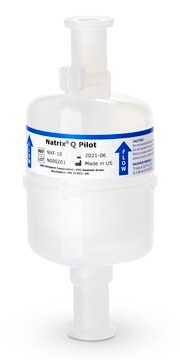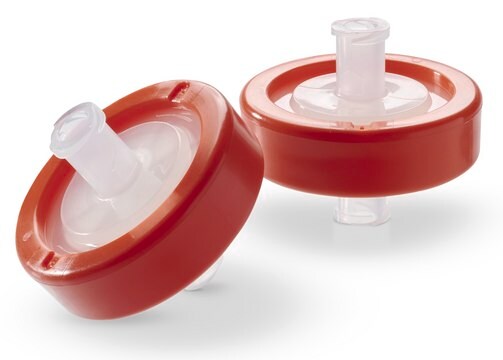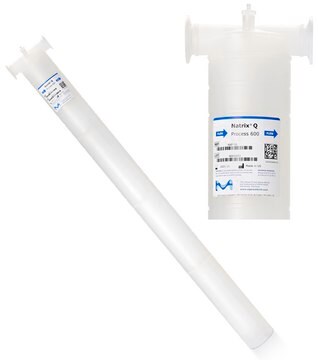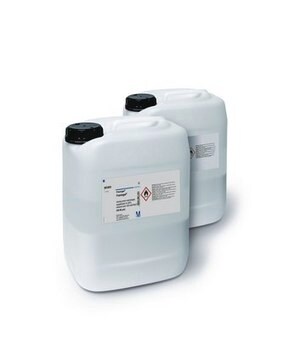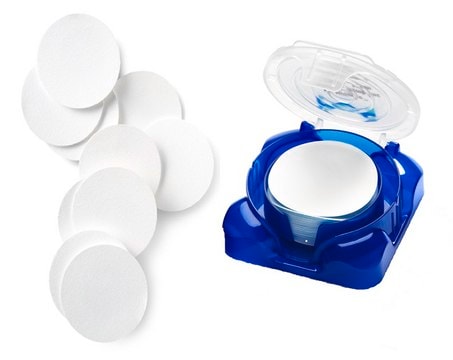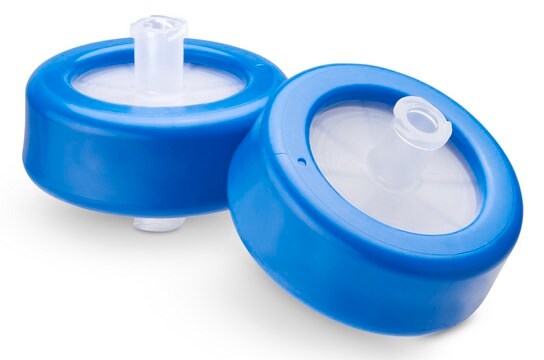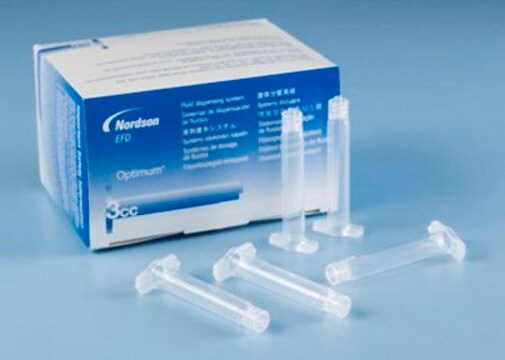NXF-20
Natrix® Q Process 150
Synonim(y):
Natrix® Q Membrane Adsorber
About This Item
Polecane produkty
ligand
quaternary amine
Poziom jakości
opis
Natrix® Q Process 150
linia produktu
Natrix®
Parametry
0.6-3 L/min flow rate
wypełnienie wys.
0.5 mm
objętość złoża
115 mL
grupa aktywna macierzy
Macroporous polymer
wielkość porów
0.4 μm pore size
pojemność
23 g binding capacity (BSA)(per device
per device)
metoda separacji
strong anion exchange
Warunki transportu
ambient
Szukasz podobnych produktów? Odwiedź Przewodnik dotyczący porównywania produktów
Opis ogólny
Natrix® Q chromatography membrane is a high productivity strong anion exchange membrane designed for biomolecule purification. The unique Natrix® Q chromatography membrane is a porous polyacrylamide hydrogel containing a high density of pendant quaternary ammonium (Q) binding groups that are directly polymerized within the an inert, macroporous membrane scaffold. The interconnected pore structure and high functional group density enables fast flow rates (seconds of residence time) with impressive throughput to extremely high loads while maintaining excellent impurity reduction across a wide range of buffer conditions. The Natrix® Q chromatography membrane design delivers improvements in productivity, flexibility, and process robustness and economics for any bioprocess design. The Natrix® Q Process 150 is process scale device designed for full-scale clinical and commercial manufacturing.
mAb nominal polishing capacity: 1150 g
Membrane configuration: Pleated
1 device per package
Cechy i korzyści
- High density of quaternary amine binding sites enabling rapid mass transfer
- High binding capacity even at fast flow rates
- Combination of performance and speed in, single use, plug-and-play device format enables low risk, scalable solutions for efficient biomolecule purification.
Opakowanie
Informacje prawne
produkt powiązany
Certyfikaty analizy (CoA)
Poszukaj Certyfikaty analizy (CoA), wpisując numer partii/serii produktów. Numery serii i partii można znaleźć na etykiecie produktu po słowach „seria” lub „partia”.
Masz już ten produkt?
Dokumenty związane z niedawno zakupionymi produktami zostały zamieszczone w Bibliotece dokumentów.
Produkty
Pros and Cons of Existing Chromatography Technology
Membrane adsorbers are a cost-effective, robust, single-use solution for monoclonal antibody polishing
Zobacz przykłady studium przypadku, jak zoptymalizować chromatograficzne oczyszczanie plazmidowego DNA do zastosowań biofarmaceutycznych.
Indywidualnie zaprojektowany model kosztów jest wykorzystywany do badania ekonomiki produkcji szczepionek w kilku różnych modalnościach, w tym mRNA. Model umożliwia lepsze zrozumienie procesu, symuluje wąskie gardła i pomaga zoptymalizować wydajność produkcji.
Powiązane treści
Ten artykuł techniczny przedstawia proces produkcji szczepionki adenowirusowej i zawiera studium przypadku dotyczące opracowania przyspieszonej i opłacalnej szczepionki wektorowej adenowirusowej jednorazowego użytku.
Nasz zespół naukowców ma doświadczenie we wszystkich obszarach badań, w tym w naukach przyrodniczych, materiałoznawstwie, syntezie chemicznej, chromatografii, analityce i wielu innych dziedzinach.
Skontaktuj się z zespołem ds. pomocy technicznej